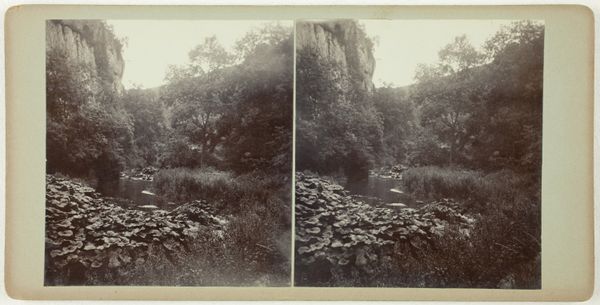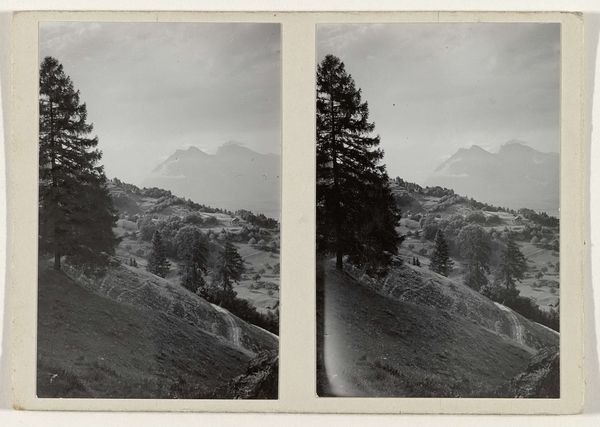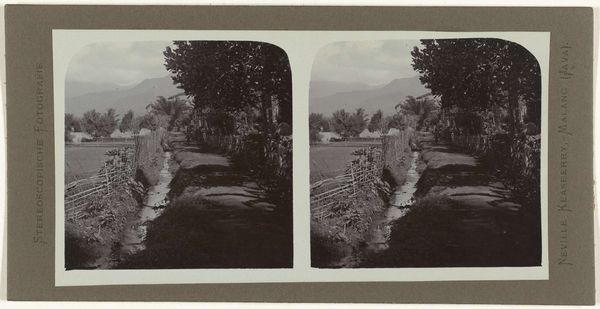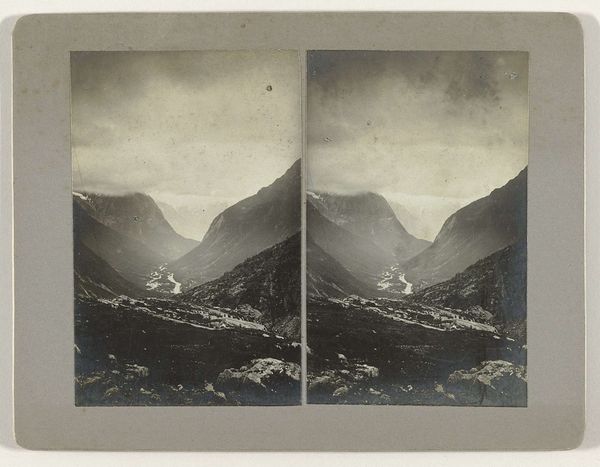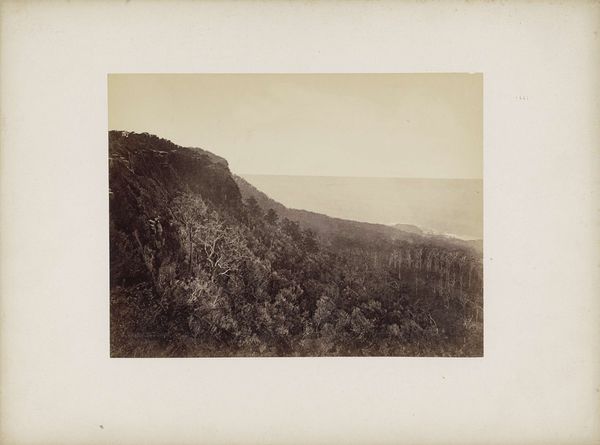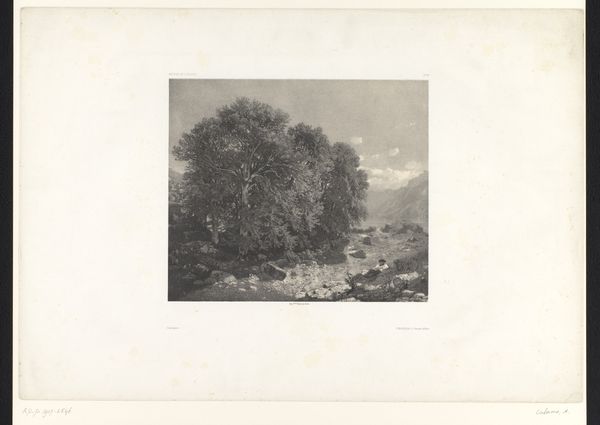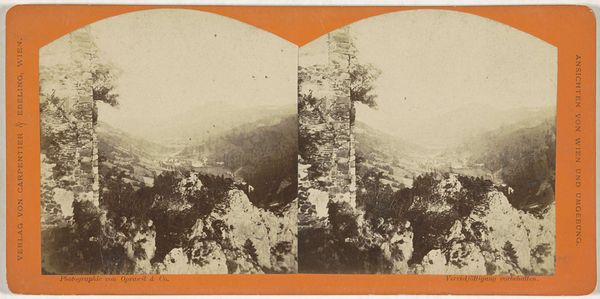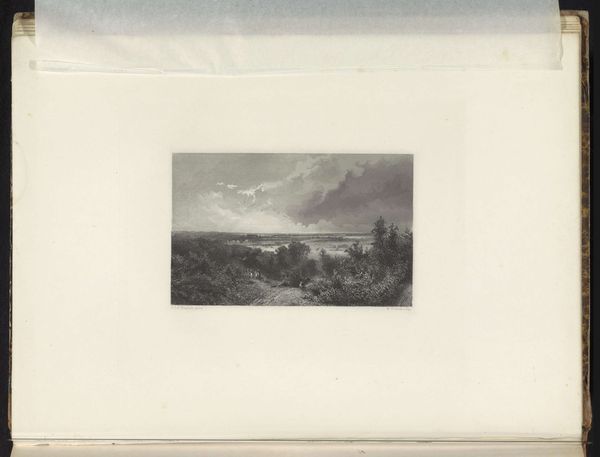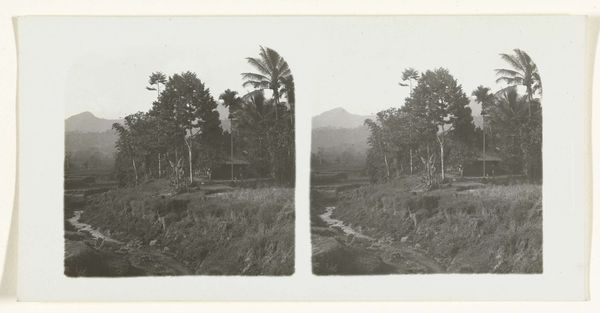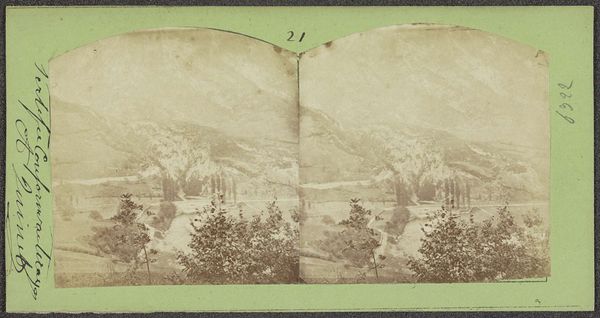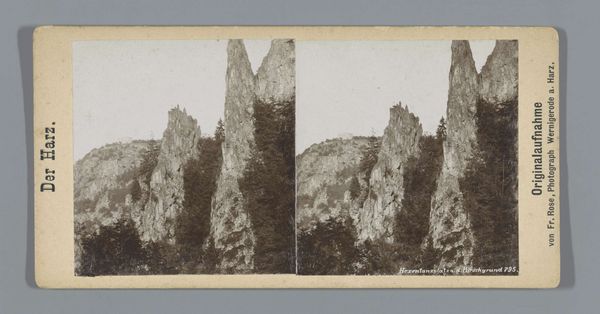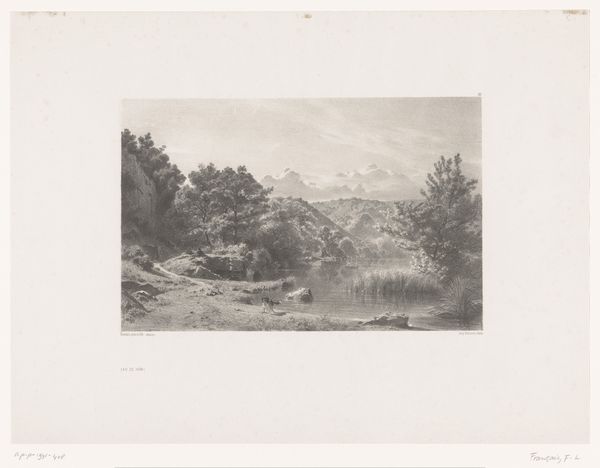
Dorpsgezicht over het Zwitserse Ragaz met op de heuvel een klein kasteel c. 1920 - 1945
0:00
0:00
geldolphadriaankessler
Rijksmuseum
photography
#
pictorialism
#
landscape
#
photography
#
cityscape
Dimensions: height 80 mm, width 104 mm
Copyright: Rijks Museum: Open Domain
Editor: This photograph, “Dorpsgezicht over het Zwitserse Ragaz met op de heuvel een klein kasteel,” was taken by Geldolph Adriaan Kessler sometime between 1920 and 1945. The pictorialist style and the stark blacks and whites give it a melancholic and aged feel. What do you see in this piece? Curator: What I find compelling is the power dynamic inherently captured in the framing. We have this picturesque, almost romantic, depiction of a Swiss village nestled beneath the watchful gaze of a castle. Consider for a moment who holds the power here, both literally within the scene, and perhaps, implicitly, through the photographer's choices. How do you think the average resident of that village felt about the structure overlooking them? Editor: I hadn’t thought about it in terms of power, more just as a pretty view. But the castle *is* imposing, even in a photograph. The photographer might have seen it that way, too. Curator: Precisely. Kessler's choice to capture this scene, a specific landscape, during that specific timeframe, invites questions. Was it a commentary on enduring feudal structures, even as modernism swept through Europe? Or was it merely a nostalgic gaze backward, romanticizing a time when such hierarchies were explicit? What did it mean for Kessler, as the photographer, to be making these choices? Editor: That’s interesting. I was just thinking about the aesthetic of it. I see your point – it definitely makes you think about more than just the pretty scenery. Curator: Exactly. By engaging with the context, we can begin to see how even seemingly innocuous landscape photography can participate in broader narratives of power, memory, and social commentary. What do you take away from looking at the piece this way? Editor: I'll definitely be considering these things, the "who" and "why" behind the artist's decisions, next time I look at any piece of art. Thanks!
Comments
No comments
Be the first to comment and join the conversation on the ultimate creative platform.
